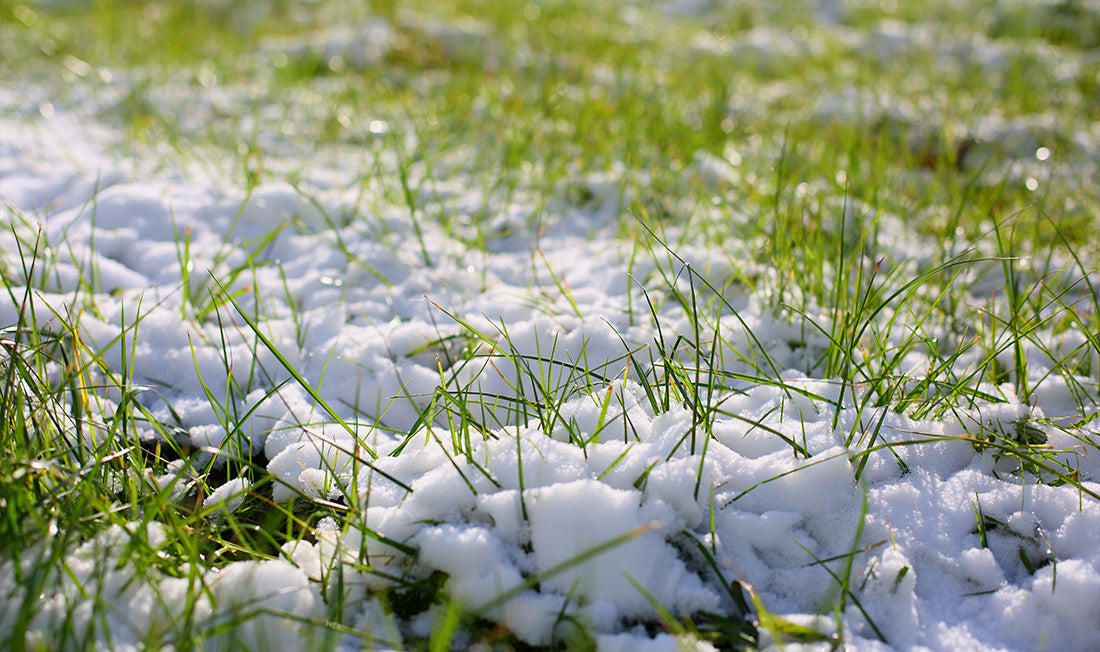Snow mold is a foliar disease of all cool-season grasses and even some warm-season grasses like bermudagrass. When you hear about snow mold, you’ll most likely hear about two kinds, pink or gray snow mold. Pink snow mold or Microdochium patch is caused by the pathogen Microdochium nivale. When an outbreak occurs under snow cover, it is referred to as pink snow mold, but this pathogen commonly infects turfgrass with no snow cover; it is then referred to as Microdochium patch.
Gray snow mold, on the other hand, doesn’t necessarily require snow cover to infect your turf. However, it is much more common to encounter outbreaks after turf has been covered with snow for extended periods throughout the winter. Gray snow mold is more closely associated with snow cover and is caused by two pathogens in the Typhula genus, T. incarnata and T. ishikariensis. Gray snow mold is tough because you oftentimes can’t see it until the snow melts in the spring.

How to Prevent Snow Mold
Enough with the Latin names and the minutia. You’re here to learn how to prevent snow mold from showing up in your yard. Fungicide applications are not typically recommended for homeowners for snow mold prevention. Instead, it’s best to make your lawn as inhospitable to snow molds as possible.
- Remove Thatch - If your lawn is a spongy, thatchy mess, it’s important to core-aerate or verticut (vertical mow) your lawn in the fall to help remove and/or facilitate thatch degradation.

- Drop Mowing Height - This does not mean scalp your lawn and mow it at 1” for your last mow of the season, but as the days get shorter, slowly drop your height of cut to somewhere around 2.5”. Long grass can become matted down and turn into a perfect breeding ground for disease.

- Avoid Quick-Release Nitrogen Late In The Season - This is to avoid encouraging lush new growth immediately before the cool, wet, or snowy weather kicks in. The newest growth with be the most susceptible to infection
- Remove Snow After 90 Days - If possible, once you’ve had a snow pack on your lawn for close to three months straight, getting out there and removing the snow could be very helpful come spring. Gray snow mold steps on the throttle at this time.
- Increase Sunlight - Increasing sunlight by removing vegetation or tree branches will help with snow met and air flow in the area. Both can help reduce snow mold severity.
How to Get Rid of Snow Mold?
Luckily snow mold is a foliar disease and typically does not result in any long-term damage. In the spring, begin mowing as soon as possible to help remove the infected growth. Begin fertilizing to encourage new growth, which will help mask the scars. After the threat of your last frost, apply some nitrogen to wake your lawn up and get it growing. Consider something like SLS 28-0-0, which is 28% nitrogen, to help give your lawn the head start it needs to grow out of the damage incurred. Don’t hesitate to reach out to us and our lawn care team will be happy to set you on the right path come spring.










